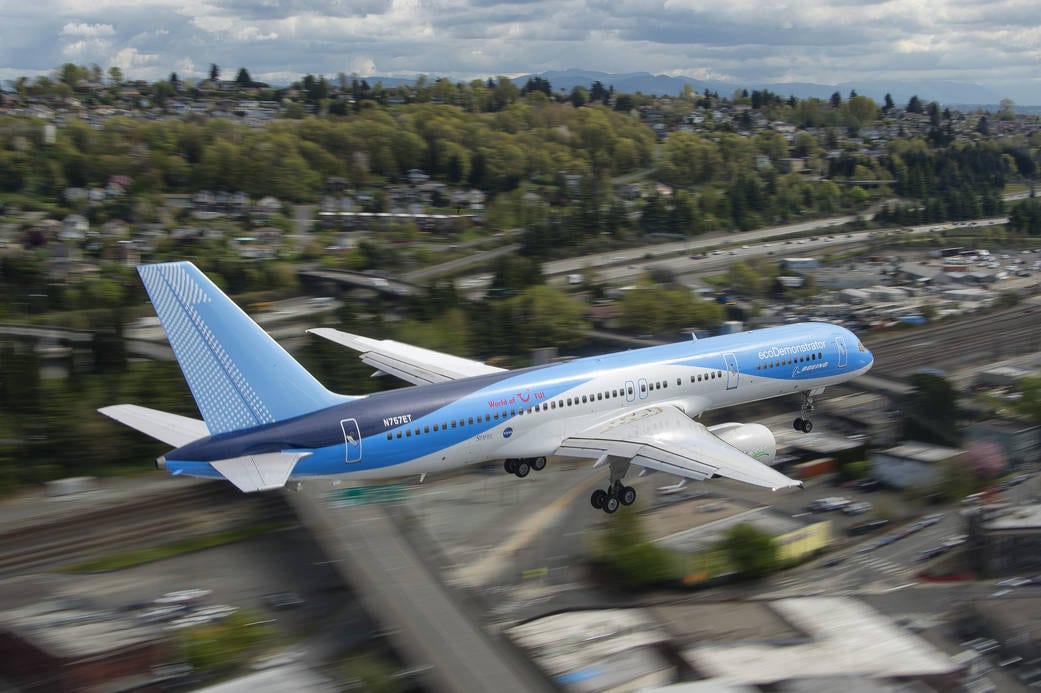 |
| The Boeing 787 ecoDemonstrator. Photo: NASA |
[Avionics Today 04-21-2015] NASA researchers have wrapped up a series of flight experiments with Boeing’s ecoDemonstrator 757 airplane to assess the effect of tiny devices called sweeping jet actuators. Thirty-one of these devices were installed on the aircraft’s vertical tail, during the Active Flow Control Enhanced Vertical Tail Flight Experiment, which provides stability and directional control during takeoff and landing, and were tested to determine their effect on the aerodynamics of the tail and rudder surfaces.
“If we can control the flow of air over the vertical tail on demand, we believe we can provide enough side force during take-off and landing that aircraft manufacturers can safely make the tail smaller,” said Mike Alexander, lead systems engineer for the flight tests at NASA’s Langley Research Center in Hampton, Va. “The ability to reduce the size of the vertical tail would reduce weight and drag and decrease fuel consumption and emissions.”
Initial flight tests seemed to validate this theory, suggesting that future aircraft designers may be able to scale down the size of the vertical tail by about 17 percent and reduce fuel usage by as much as .5 percent. With this experiment finished, the next stop for the ecoDemonstrator 757 is Shreveport, La., where another set of NASA researchers will test wing coatings designed to minimize insect residue.